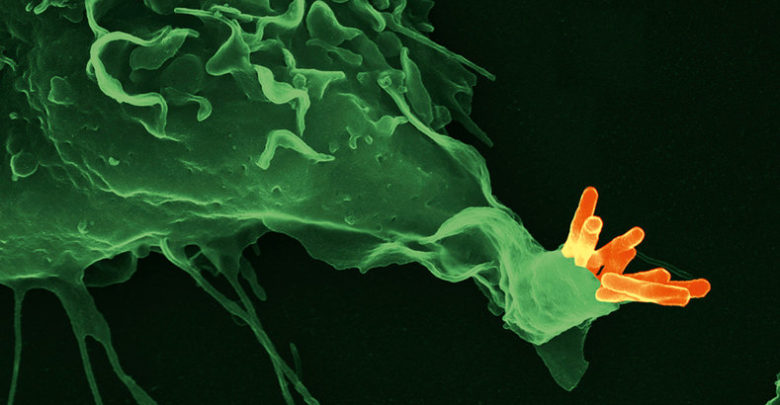New Blood Test to Estimate the Risk of Developing Active Tuberculosis

An international team of researchers, including scientists from the Max Planck Institute for Infection Biology in Berlin, has now developed a simple blood test to enable them to estimate the risk of developing active tuberculosis. Using the new test, the researchers can predict who is likely to come down with the disease. The test measures the activity of pairs of genes involved in the inflammatory response. This should in future enable doctors to offer prophylactic antibiotic treatment to people at high risk of going on to develop active disease, and conversely to avoid unnecessarily treating people who are at low risk.
In a new study, researchers analyzed the health status of around 4,500 people from South Africa, the Gambia and Ethiopia living with a tuberculosis patient. The researchers measured the amount of various RNA molecules – and thus the activity of the corresponding genes – in blood cells. Using sophisticated software, they identified genes which are more active or less active in individuals who subsequently go on to develop active tuberculosis than in people who remain healthy. They then paired up sets of one up-regulated and one down-regulated gene and calculated the predictive power of these pairs.
Risk gene for active tuberculosis
They then looked at household contacts of people with tuberculosis and compared 79 people who developed active tuberculosis within the following two years with 328 healthy people who did not go on to develop the active disease. They found differences in activity of two gene pairs between the two groups. Importantly, these differences were not dependent on where they were from. “Using the pattern of activity of these ‘risk 4’ genes, we were able to determine the tuberculosis risk of infected individuals. That means we can say one year earlier who is likely to develop active tuberculosis,” explains Kaufmann. Because the study focussed on individuals from various regions across Africa, the test should be applicable across the whole of the continent.
The results show that certain gene pairs can predict tuberculosis risk. With just a single pair, the researchers were able to identify most of those who would go on to develop active tuberculosis. By adding in a second gene pair, the predictive power of the gene analysis was improved further. “These results are the most significant findings so far in our ten-year Grand Challenges project,” says Stefan Kaufmann from the Max Planck Institute for Infection Biology. The Grand Challenges project, which was supported by the Bill & Melinda Gates Foundation, involved close collaboration between seven research groups from Africa, Europe and the USA. Kaufmann was responsible for coordinating the project. “This study proves, not only that a partnership between North and South can work, but that such a partnership can also make a significant contribution to controlling one of the most terrible diseases on the planet,” says Kaufmann.
Based on these results, there are now plans to develop, in conjunction with a commercial partner, a test suitable for practical use on the ground. This could provide much more accurate results than the diagnostic tests currently available, and also enable doctors to select and offer prophylactic antibiotics to those patients most likely to develop active tuberculosis. At the same time, it could help doctors to avoid subjecting individuals who would not go on to develop the disease to the risks associated with several weeks of antibiotic prophylaxis.




